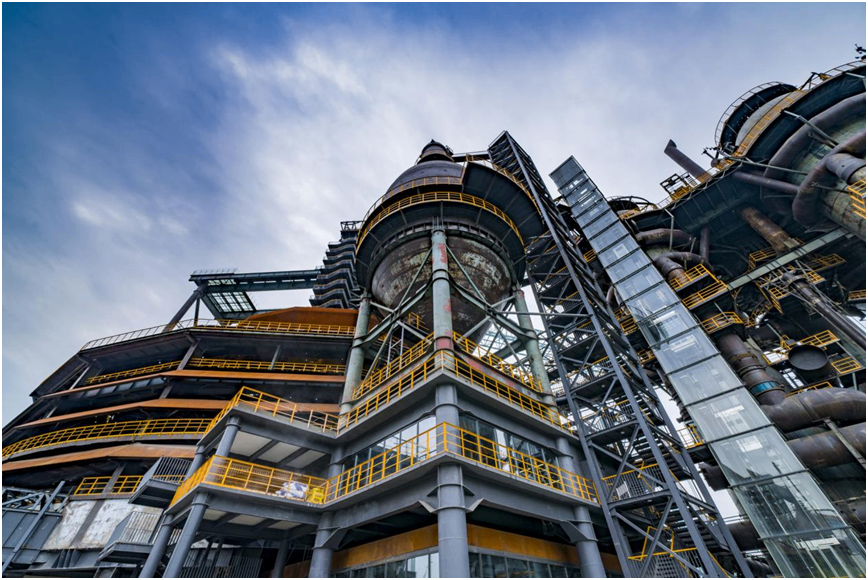Green steel, defined as steel products that significantly reduce carbon emissions and environmental impacts through innovative technologies and sustainable production methods, has become one of the era's themes for global industrial transformation. The global green transition of the steel industry is imperative. According to the International Energy Agency (IEA), global steel demand is expected to increase by about one-third by 2050 compared to 2020. Currently, global crude steel production is enormous, with China accounting for half of it. In 2024, China's total crude steel production reached 1.005 billion tons, accounting for 53.4% of the global total. At the same time, carbon emissions in the steel industry are particularly prominent. The industry accounts for about 8% of global final energy demand, second only to the power sector, making it the world's second-largest direct source of carbon emissions. Traditional steel production primarily relies on the blast furnace-basic oxygen furnace process, which is highly dependent on coal energy, resulting in a global average steel emission intensity of 1.91 tons of CO₂ equivalent per ton of steel. Carbon emissions from China's steel industry account for approximately 15% of the country's total carbon emissions.
Against the backdrop of a worsening global climate crisis and the gradual implementation of carbon neutrality commitments, the green transformation of the steel industry is not only necessary but also urgent. According to IEA calculations, to achieve the temperature control goals of the Paris Agreement, the rate of decline in carbon emission intensity in the steel industry must increase to three times the current annual rate of 0.8% over the next five years. This compels the steel industry to pursue technological innovation, process reform, and energy substitution to achieve leapfrog development.
Image Source:699pic.com
Multi-Path Technical Innovation Leading the Direction of Green Transition
The green and low-carbon transformation of the steel industry is advancing simultaneously along multiple technological pathways. On one hand, "secondary steel" produced through electric arc furnace (EAF) smelting of recycled scrap steel has become an important growth direction due to its low energy consumption and emissions. Compared with primary production, scrap steel melting reduces energy consumption by 40% and carbon emissions by approximately 67%. The proportion of steel produced by EAFs in Europe and the United States generally ranges from 30% to 70%, while China's long-process steelmaking still accounts for 90%, leaving room for structural optimization. On the other hand, emerging technologies such as hydrogen-based direct reduction, electrolytic ironmaking, and carbon capture, utilization, and storage (CCUS) are making continuous breakthroughs. Replacing traditional coke reduction with hydrogen reduction can significantly reduce carbon dioxide emissions and is regarded as a key future direction for green metallurgy.
The IEA proposes that by 2030, carbon emission intensity in primary steel production must decrease by 45%, and in secondary steel production by 65%. By 2050, the target emissions for primary and secondary steel should be controlled at 0.33 tons and 0.05 tons of CO₂ equivalent per ton of steel, respectively. The green transition has entered a critical window period.
Challenges and Solutions in Green Transition
Although the trend of green steel transition is irreversible, it still faces severe challenges. Global steel demand was weak in 2024, declining by approximately 0.9%, and global green investment fell to its lowest level in six years. Against the backdrop of rising hydrogen production costs, leading steel company ArcelorMittal slowed down its hydrogen metallurgy initiatives, instead prioritizing the expansion of electric furnace projects and exploring the realization of "low-carbon premiums" through its XCarb™ certificate mechanism—reflecting the pragmatic strategies of traditional giants during periods of technological uncertainty. Additionally, Germany's ThyssenKrupp suspended its planned Duisburg hydrogen-based direct reduction plant (scheduled to be completed in 2026 with a planned capacity of 2.5 million tons of direct reduced iron) in October 2024. The global revolution of steel's "transition from black to green" continues to struggle to break through the challenges of cost, technology, and scaling.
Factors such as the continuity of policy support, the implementation of green procurement mechanisms, the recovery of downstream demand, and financial innovation will be key variables determining whether green steel can accelerate its popularization in the future. Especially for small and medium-sized steel enterprises, which face enormous transformation pressures, it is crucial for governments, financial institutions, and upstream and downstream players in the industrial chain to form a joint force and explore diversified risk-sharing mechanisms.
China Leading a New Journey in Global Steel Green Transition
China continues to expand its leading position in clean hydrogen supply and green power development. For example, in 2024, Inner Mongolia's renewable energy power generation increased by 27.6% to exceed 210 billion kilowatt-hours—equivalent to twice Japan's annual electricity consumption—making it a "green power bank." Through large-scale wind and photovoltaic projects, Inner Mongolia supplies green power to eastern China, becoming a vital pillar of the country's energy transition.
Looking to the future, China's steel industry will continue to adhere to innovation-driven development and open cooperation, promote green technology research and application, actively integrate into global green supply chains, create more green products and brands, and assist in achieving global climate governance goals to usher in a new chapter of green development for the steel industry. Green steel presents both challenges and opportunities. Only by upholding the principles of consultation, co-construction, and shared benefits, insisting on innovation-driven development, and embracing openness and inclusivity can the global steel industry achieve steady and far-reaching progress on the path of green and low-carbon development and jointly paint a beautiful future for human sustainable development.



